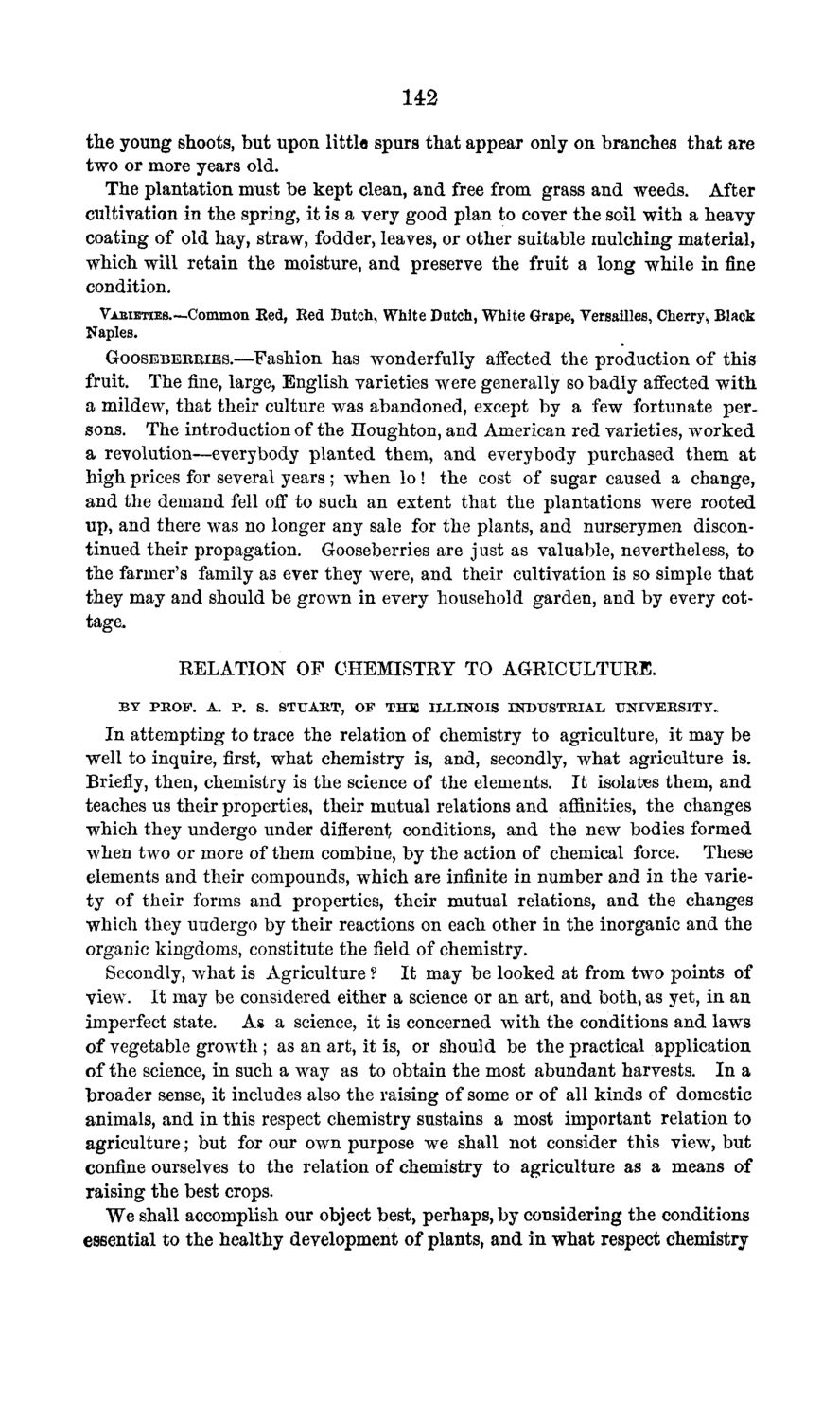| |
| |
Caption: Board of Trustees Minutes - 1869
This is a reduced-resolution page image for fast online browsing.

EXTRACTED TEXT FROM PAGE:
142 the young shoots, but upon little spurs that appear only on branches that are two or more years old. The plantation must be kept clean, and free from grass and weeds. After cultivation in the spring, it is a very good plan to cover the soil with a heavy coating of old hay, straw, fodder, leaves, or other suitable mulching material, which will retain the moisture, and preserve the fruit a long while in fine condition. VAEIBTIEB.—Common Red, Red Dutch, White Dutch, White Grape, Versailles, Cherry^ Black Naples. GOOSEBERRIES.—Fashion has wonderfully affected the production of this fruit. The fine, large, English varieties were generally so badly affected with a mildew, that their culture was abandoned, except by a few fortunate persons. The introduction of the Houghton, and American red varieties, worked a revolution—everybody planted them, and everybody purchased them at high prices for several years; when lo ! the cost of sugar caused a change, and the demand fell off to such an extent that the plantations were rooted up, and there was no longer any sale for the plants, and nurserymen discontinued their propagation. Gooseberries are just as valuable, nevertheless, to the farmer's family as ever they were, and their cultivation is so simple that they may and should be grown in every household garden, and by every cottage. RELATION OF CHEMISTRY TO AGRICULTURE. BY PROF. A. P. S. STUART, OF THE ILLINOIS INDUSTRIAL UNIVERSITY. In attempting to trace the relation of chemistry to agriculture, it may be well to inquire, first, what chemistry is, and, secondly, what agriculture is. Briefly, then, chemistry is the science of the elements. It isolates them, and teaches us their properties, their mutual relations and affinities, the changes which they undergo under different conditions, and the new bodies formed when two or more of them combine, by the action of chemical force. These elements and their compounds, which are infinite in number and in the variety of their forms and properties, their mutual relations, and the changes which they undergo by their reactions on each other in the inorganic and the organic kingdoms, constitute the field of chemistry. Secondly, what is Agriculture ? It may be looked at from two points of view. It may be considered either a science or an art, and both, as yet, in an imperfect state. As a science, it is concerned with the conditions and laws of vegetable growth ; as an art, it is, or should be the practical application of the science, in such a way as to obtain the most abundant harvests. In a broader sense, it includes also the raising of some or of all kinds of domestic animals, and in this respect chemistry sustains a most important relation to agriculture; but for our own purpose we shall not consider this view, but confine ourselves to the relation of chemistry to agriculture as a means of raising the best crops. We shall accomplish our object best, perhaps, by considering the conditions essential to the healthy development of plants, and in what respect chemistry
| |